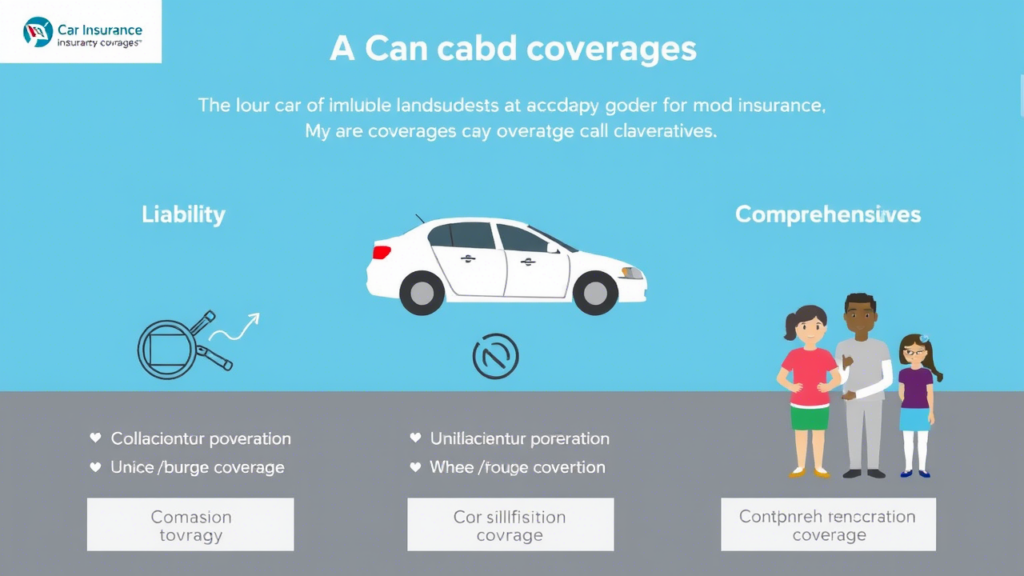Understanding Car Insurance Coverage Options
Car insurance can feel like a maze of terms and choices, but it doesn’t have to be overwhelming. At its core, it’s about finding peace of mind on the road—knowing you’re protected no matter what comes your way. Whether you’re a new driver or just looking to refresh your understanding, let’s walk through the main coverage options calmly and clearly, so you can make the decision that’s right for you.

Liability Coverage: The Foundation
Liability coverage is the starting point for most insurance policies—and in many places, it’s required by law. It steps in if you’re at fault in an accident, covering the costs of damage or injury you cause to others. This includes things like repairs to someone else’s car or medical bills for injuries they sustain. It won’t cover your own vehicle or injuries, but it’s a critical safety net to keep you financially secure if the unexpected happens. Typically, you’ll see it split into two parts: bodily injury liability and property damage liability, with limits set for each.
Collision Coverage: Protecting Your Ride
If your car takes a hit—whether from another vehicle or an object like a tree—collision coverage is there to help. It pays for repairs to your own car after an accident, regardless of who’s at fault. This option brings a sense of calm, especially if you drive a newer or more valuable vehicle. Keep in mind, though, it often comes with a deductible—the amount you pay out of pocket before the insurance kicks in. Choosing a higher deductible can lower your premium, but it’s worth weighing what feels comfortable for your budget.
Comprehensive Coverage: Beyond the Crash
Not every mishap involves a collision. Comprehensive coverage handles the “what-ifs” that can catch you off guard—like theft, vandalism, or a cracked windshield from a stray rock. It even covers natural events, such as a storm knocking a branch onto your hood. Paired with collision coverage, it offers a fuller shield for your car. Like collision, it includes a deductible, so you’ll want to think about what balance works for you between monthly costs and potential claims.
Uninsured/Underinsured Motorist Coverage: A Safety Buffer
It’s a tough reality, but not every driver on the road has insurance—or enough of it. Uninsured and underinsured motorist coverage steps in if you’re hit by someone who can’t cover the damages. It can pay for your medical bills, lost wages, and sometimes even your car repairs. This option is like a quiet backup plan, giving you reassurance in a situation you can’t control.
Personal Injury Protection (PIP) and Medical Payments: Your Well-Being
Accidents can leave more than just dents—they can leave you or your passengers needing care. Personal Injury Protection, or PIP, goes beyond medical bills to cover things like lost income or even childcare if you’re sidelined by injuries. Medical Payments coverage is simpler, focusing just on health-related costs. Depending on where you live, one of these might be mandatory, but even if it’s optional, it’s worth considering for that extra layer of calm.
Optional Add-Ons: Tailoring Your Policy
Beyond the basics, there are extras you can weave into your plan. Roadside assistance can be a lifesaver if you’re stranded with a flat tire or dead battery. Rental car reimbursement keeps you moving while your vehicle’s in the shop. And if you’ve customized your car with special parts, you might look into coverage for those upgrades. These add-ons let you shape your insurance to fit your life, without any pressure to overcomplicate things.
Finding Your Fit
Choosing the right coverage is less about checking every box and more about what brings you comfort. Think about your car’s value, how much you drive, and what you could handle financially if something goes wrong. A chat with your insurance agent can help clarify what’s required in your area and what’s optional but wise. There’s no rush—take your time to weigh it all.
In the end, car insurance is about driving with confidence, knowing you’ve got a plan in place. It’s not about predicting the future; it’s about being ready for it. With a little thought, you can find a policy that feels just right—steady, simple, and suited to you.


